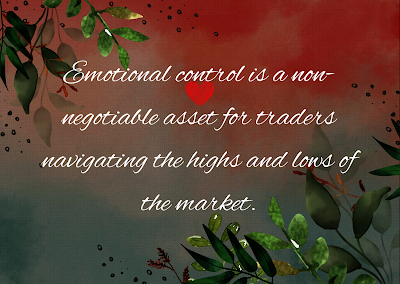Introduction: Day trading can be a thrilling and
potentially lucrative endeavor, but it's not without its risks. One of the
biggest challenges for day traders is controlling losses. In this article,
we'll explore ten essential strategies that can help day traders effectively
manage and minimize losses, ultimately increasing their chances of success in
the volatile world of day trading.
1. Set Stop-Loss Orders: Implementing stop-loss orders is
fundamental for controlling losses in day trading. By predetermining the
maximum amount you're willing to lose on a trade and setting a stop-loss order
accordingly, you can protect your capital from significant downturns in the
market.
2. Utilize Risk Management Techniques: Successful day traders understand
the importance of risk management. Never risk more than a small percentage of
your trading capital on any single trade. Adhering to the 1% rule can help you
maintain discipline and preserve your capital over the long term.
3. Diversify Your Trades: Diversification is key to reducing
risk in day trading. Rather than concentrating all your capital into one trade,
spread your investments across different assets or markets. This strategy helps
mitigate the impact of losses in any single position.
4. Stick to Your Trading Plan: A well-defined trading plan is
essential for navigating the complexities of day trading. Establish clear entry
and exit points, risk-reward ratios, and position sizing rules in advance.
Discipline yourself to adhere to your plan, even when emotions are running
high.
5. Avoid Revenge Trading: Emotional reactions to losses can be
detrimental to day traders. Resist the temptation to engage in revenge trading
to recoup losses quickly. Instead, maintain a calm and rational mindset,
focusing on executing your trading plan with precision.
6. Stay Informed: Knowledge is power in
day trading. Keep yourself updated with market news, economic events, and
technical analysis. By staying informed, you can make more informed trading
decisions and react swiftly to changes in market conditions.
7. Practice Patience: Patience is a virtue for successful
day traders. Wait for high-probability trading setups to emerge, rather than
forcing trades out of impatience or boredom. Remember, sometimes the best trade
is the one you don't make.
8. Learn from Your Mistakes: Every loss presents an opportunity
for learning and improvement. Take the time to review your losing trades
objectively. Identify any patterns or mistakes in your strategy and use these
insights to refine your approach going forward.
9. Manage Leverage: While leverage can amplify gains in
day trading, it also magnifies losses. Exercise caution when using leverage and
only trade with amounts you can afford to lose. Understanding the risks
associated with leverage is crucial for protecting your capital.
10.
Control Your Emotions: Emotions like fear and greed can cloud judgment and lead to poor
decision-making. Develop emotional discipline by maintaining a calm and
rational mindset, regardless of market fluctuations. Remember, successful day
trading is as much about controlling emotions as it is about analyzing charts.
Conclusion: Controlling losses is a critical
aspect of day trading success. By implementing the ten strategies outlined in
this article—setting stop-loss orders, utilizing risk management techniques,
diversifying trades, sticking to your trading plan, avoiding revenge trading,
staying informed, practicing patience, learning from mistakes, managing
leverage, and controlling emotions—day traders can navigate the markets more
effectively and increase their chances of achieving consistent profitability
over time.






